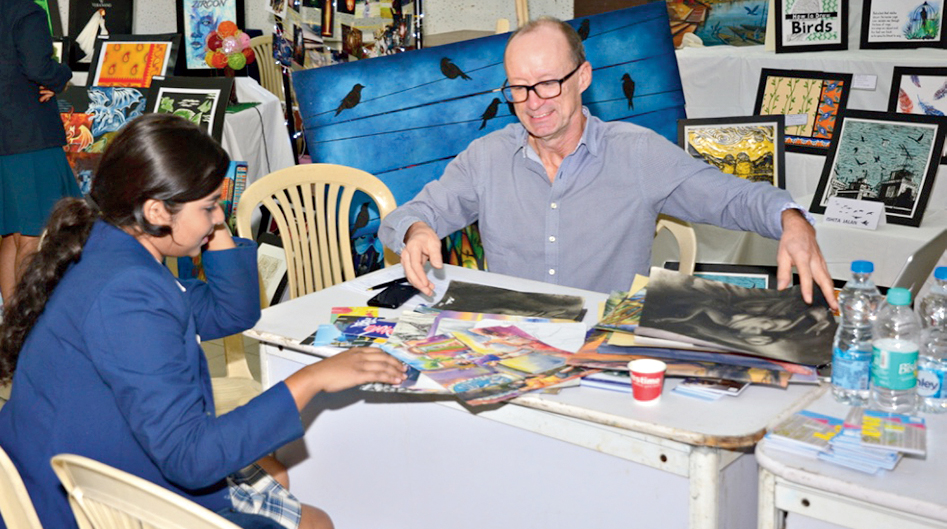For many years now, European countries, Canada and the US have been observing a National Portfolio Day. This annual event gives art students a chance to meet representatives of various colleges and universities and receive constructive feedback on their portfolios.
An art portfolio is a visual resume of an art student. Its purpose is to highlight and present the creative work — paintings, installations, sculptures — in a form that is easy to peruse by faculty of institutions one is applying to for higher studies. In fact, a portfolio is a crucial part of the application kit for art and design courses.
Two years ago, India witnessed its first such initiative in Delhi. “We deal with a lot of Art and Design students and we found that they were all good but did not know which direction they were headed. They needed guidance,” says Mrinal Singh, executive director of education consulting firm Prem N. Kapur Associates Pvt. Ltd, which organised the event. Mumbai too joined the bandwagon. And last month, Calcutta’s Modern High School hosted India Portfolio Day 3.
The venue was milling with school students. Institutions such as the Art University Bournemouth (UK), Falmouth University(UK), Indian School of Design & Innovation (India), Nanyang Academy of Fine Arts (Singapore), New York Film Academy (US) and School of Visual Arts (US) had a stall each and one or more representatives reviewing portfolios.
Though art colleges and design institutes are not uncommon in India, there is probably not enough thought riding on the admission process. (Think medicine, think engineering, think law.) “The way we teach art in India is very skill-based, it’s about perfecting lines and strokes and not letting the creativity of these young minds fly. Whereas if you want to study art and design and be successful in this field, you need to imagine and think more creatively,” says Singh. There was very little guidance available to students till 2016, which is when the first portfolio day was hosted in Delhi. “This year we saw 400 students and 23 creative institutions across Delhi, Mumbai and Calcutta… The chance of acceptance increases after candidates get their portfolios reviewed. Otherwise, 70 per cent get rejected. We organise the meet at this time because most deadlines are in December or January,” Singh says.

The Telegraph picture
Neha Chaudhary, admissions representative of New York Film Academy says, “I am from northern India where art is not treated seriously. Parents encourage students only to take up traditional courses, and consider others a hobby. But seeing student turnout at these events, I guess things are now changing.” She spoke about the academy’s 15 specialised courses and the financial assistance available.
S. Lakshmi, senior counsellor at Nanyang Academy of Fine Arts, tells The Telegraph how interest in and attitude to Art varies from geography to geography. “In Chennai, not many students have art and design as a subject in school. But Bangalore and Calcutta are different… I have been doing this (counselling) for nine years. Earlier, not many students would opt for design but there is a change.” The academy offers 50 per cent tuition grant based on a student’s portfolio, says Lakshmi.
At Modern High School, there was a collection of artworks by students on display. Among these were works by Shivika Gupta and Ishita Jalan. Shivika, who is into crafts and sketching, says, “I spoke to universities today and will work on the tips given. They appreciated my photographs, digital art and canvases.” Ishita’s installations and paintings were bird themed. She didn’t have a portfolio ready but she picked up brochures.
Shreyaangi Shroff, Devika Jhunjhunwala and Yash Bajaj, all students of The Heritage School in Calcutta, were also at the event. Commerce students Shreyaangi and Devika have taken art as a fifth subject while Yash has chosen it as his co-curricular subject. Their portfolios may be work in progress but their career choices are pretty clear. Shreyaangi wants to pursue graphic design, Yash wants to do product design because “drawing requires a lot of patience”, and Devika thinks fashion management is her calling.
When you know what you want to do, it becomes easier to suggest which way your portfolio should go.
Portfolio plan
- If you know your calling, start your portfolio at an early age
- Originality is the key, be authentic
- Be versatile and curate a variety of subjects
- Sketchbooks, tear sheets, works-in-progress may also be included











